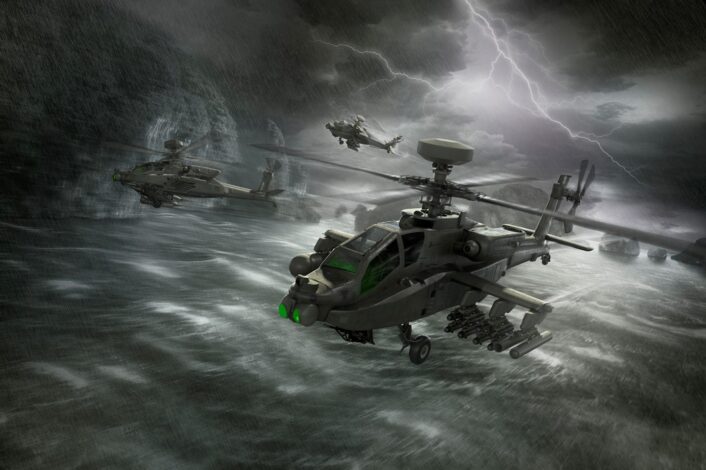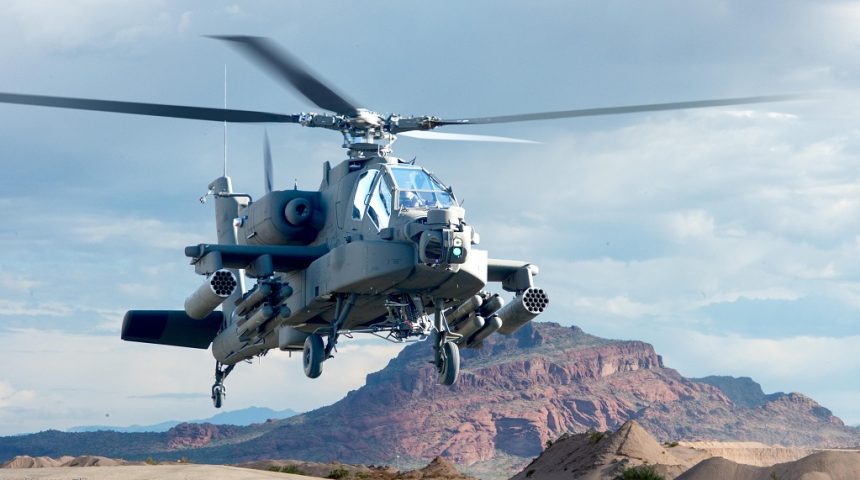While the latest AH-64E variant will be produced until at least 2028, Boeing is working on a new modernized variant that will complement the new aircraft of the Future Vertical Lift program.
Boeing was recently awarded a new $ 1.9 billion contract to keep building Apache helicopters, adding 184 AH-64Es for the U.S. Army and international customers to the production lines, including the first of 29 Apaches ordered by Australia last year. This contract follows a previous multi-year $ 3.4 billion contract signed in 2017 for the delivery of 268 AH-64Es. The Army will now receive another 115 remanufactured Apaches, with an additional 15 helicopters to be procured as options, while the remaining 54 helicopters are part of Foreign Military Sales.
“We are enhancing the U.S. Army’s attack fleet, while supporting additional partner nations and welcoming our newest Apache customer, the Australian Army,” said Christina Upah, vice president of Attack Helicopter Programs and senior Boeing Mesa site executive. “This contract highlights the need for Apaches worldwide.”
This award comes just as the U.S. Army’s AH-64 fleet surpassed 5M flight hours, a testament to the Apache’s capability, reliability and versatility. The accomplishment, as noted by Boeing in the press release, is equivalent to flying nonstop for more than 208,333 days or 570 years and nine months. Additionally, 1.3 million of those five million flight hours were accomplished during combat operations in all the operational theaters where the helicopter has been deployed throughout the years.
Five million flight hours.
You read that right. The @USArmy #AH64 Apache has officially flown over five million hours, continuing to prove itself as the most reliable and advanced attack helicopter in the world. Congrats to the Army and its Apache aviators! pic.twitter.com/sn2LIf7d2U
— Boeing Defense (@BoeingDefense) March 2, 2023
The first production AH-64 rolled off McDonnell Douglas assembly lines in 1983 and was delivered to the US Army the next year. Since then, the service operated A, D and E-model Apaches, with the latter two being the variants currently in service. The AH-64E was inducted in service in 2013 and is being fielded among all units as the older AH-64Ds are remanufactured and upgraded to the new E-model. Last year, the new variant was delivered for the first time to the National Guard and to permanently deployed units overseas in South Korea.
Boeing delivered the 2,500th AH-64 Apache helicopter in 2020 from the company’s production line in Mesa, Arizona. Legacy Apache deliveries, including new-build and remanufactured helicopters, include 937 A-models through 1997, more than 1,000 AH-64Ds between 1997 and 2013, and more than 500 E-models since 2011. More than 1,275 Apaches are currently in service with 17 defense forces around the world and the list keeps growing, with Australia and Poland being the latest countries to order the AH-64E as the 18th and 19th operators of the type.

Today’s AH-64E Version 6, or v6, Apache features integrated technologies including communications and navigation capabilities to enhance situational awareness and coordination; a new, faster multi-core mission processor for advanced systems integration; and maritime capability in the Fire Control Radar for watercraft detection and identification along with a shorter engagement timeline. The helicopter’s improved drive system includes a split-torque face gear transmission, a new GE T700-701D engine and composite main rotor blades that ensure the Apache succeeds as a highly stable aerial weapons-delivery platform, says Boeing.
Boeing is now upgrading the E-model to Version 6.5, which will include updated software, and integrating the Army’s new improved T901 turbine engine, the same that will equip also the UH-60M and FVL aircraft. Additionally, the company announced the Modernized Apache in October 2022, a Boeing concept aligned with the U.S. Army’s future modernization efforts, keeping the AH-64 a relevant, multi-domain lethal combat-multiplier for U.S. warfighters and international customers.
In the press statements following the announcement, Boeing said the Modernized Apache builds on the AH-64E v6 and is purpose-built to dominate in multi-domain battlefields, with an increased reach, greater lethality and enhanced survivability. Among the new capabilities, the Modernized Apache integrate a digital backbone, Improved Turbine Engine Program and Modular Open Systems Approach to complement and interoperate with current and future platforms. The Army is in fact planning to operate the Apache well into the 2050s.
Boeing says the following six modernization elements provide the framework for the evolution of the Apache v6 into the Modernized concept and offer the blueprint for continued dominance:
- Drivetrain upgrades to unlock Improved Turbine Engine (ITE) capabilities for enhanced power, range, efficiency and speed;
- A Modular Open Systems Approach (MOSA) for maximum interoperability, and faster integration and fielding of advanced capabilities;
- Advanced mission systems to increase interoperability to the network and to reduce pilot cognitive strain and workload during operations;
- Advanced sensors and sensor fusion for better and more resilient connectivity across domains and operations in all environmental conditions;
- Airborne long-range precision munitions, Air Launched Effects (ALE) and potential future directed energy weapon system integration for increased lethality;
- Advanced sustainment through a more capable and lower life cycle cost airframe, as well as affordable remanufacture and minimized procurement costs.
While not mentioned in the press statements, the Modernized Apache’s concept art shows extended stub wings, which add two new weapon stations shown loaded with what could be a twin ALE launcher and a directed energy weapon, in addition to 16 AGM-114 Hellfire or AGM-179 JAGM missiles on the standard four pylons. Also, the helicopter carries either an upgraded Longbow radar or a totally different sensor, as shown by the different radome mounted on top of the rotor mast.









